
Catherine and I are holed up at my mother’s place in Victoria BC; We are both nursing terrible colds (I am on my 2nd!) and Catherine is trying to recover from a serious knee injury that she got in the field. We have been out of Honduras for over a week now and are taking the opportunity to finish up writing tasks that we were finding difficult to accomplish in conjunction with fieldwork. To tell you the truth, everything feels like a bit of a wreck right now, and I am struggling to summon up any real optimism or energy. I feel like I have been neglecting the blog and have not been able to even get out shooting in Victoria due to being ill. So in an effort to keep the blog rolling along, here is a selection of photos and commentary about some of the sights of the second field outing in Olancho.
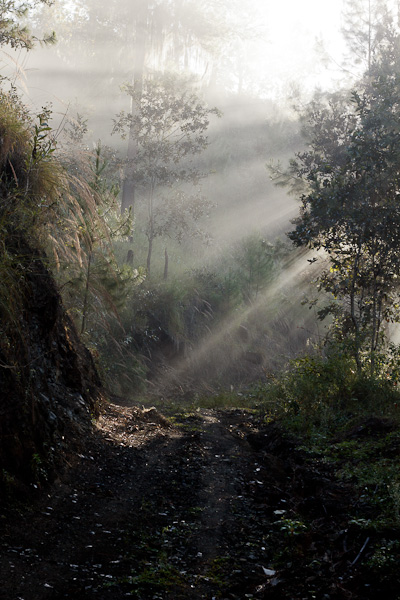
Walking out into the forest in the early morning, the light is quite magical shining through the mist. All of the area we have been working in was exploited for timber, and as such has roads throughout. None of these roads was designed or engineered to last more than a couple years, so these are now mostly impassable to all 4-wheeled vehicles. They are still used by the locals as footpaths or perhaps for use on horseback or motorcycle.

A Roadside Hawk juvenile (ID by Pablo Camacho).
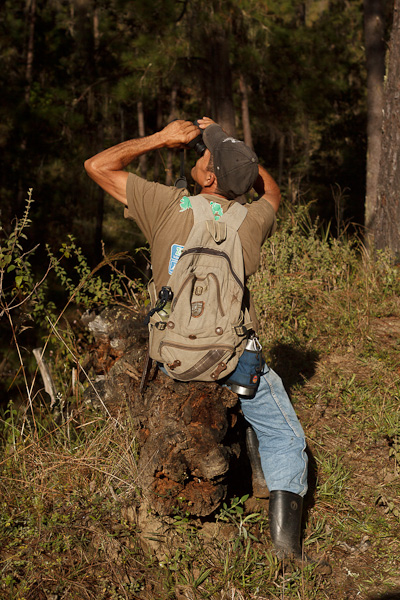
Isidro on the lookout for other warbler species, The Yellow-cheeked Warbler is also reported from these forests.
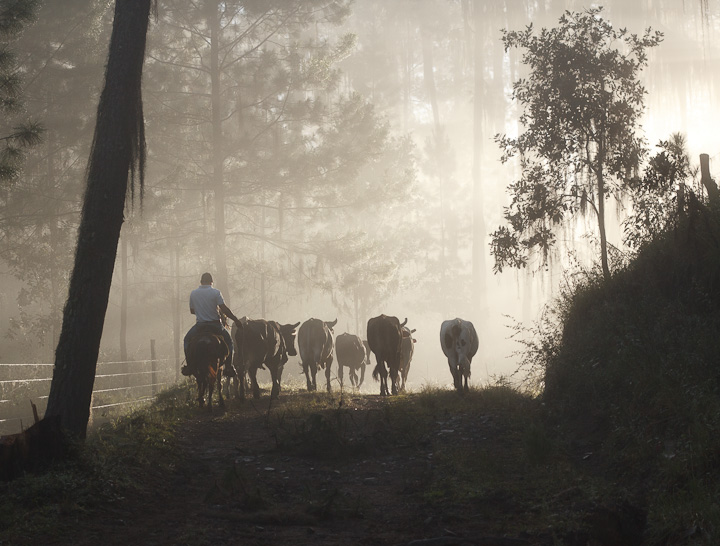
A rancher moving some cattle to a new pasture. Almost all of these forested areas are extensively used for cattle ranching, and as such experience high levels of grazing and other disturbances, such as seasonal fires and erosion. There is also cultivation of coffee, bananas, sugarcane, corn, beans and other staples.
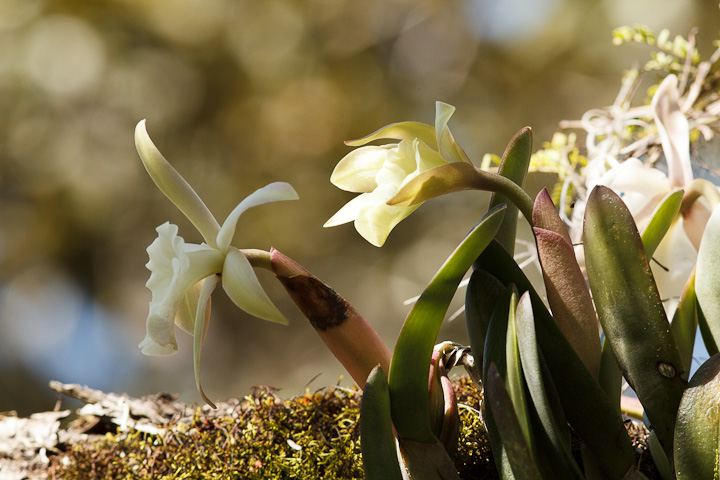
This orchid is the national flower of Honduras (according to Isidro)
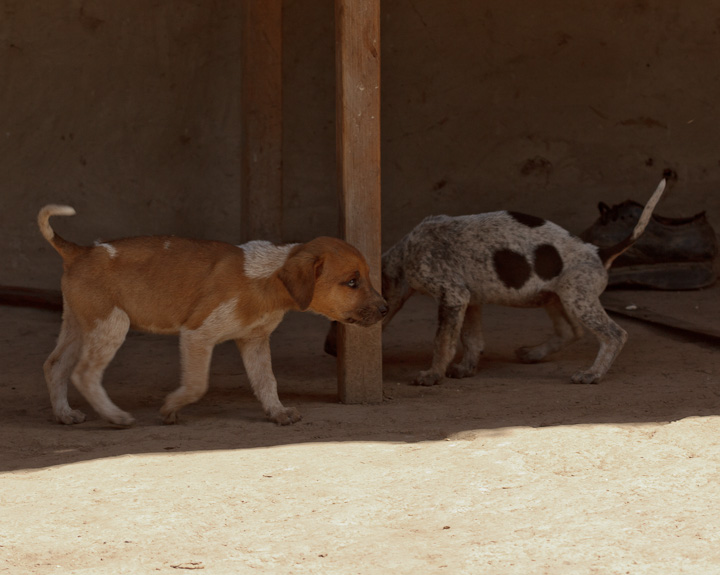
Some puppies at a farmhouse
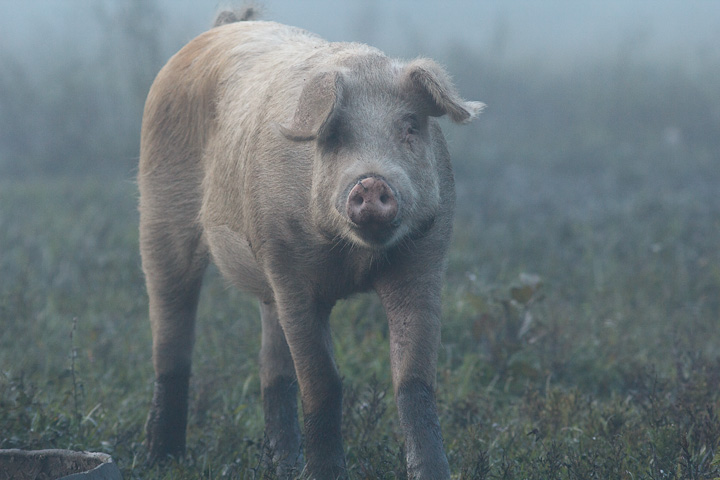
A large pig
Just get well. We blog followers will happily wait. What you are attempting in Honduras is beyond anything I would ever consider, so I, for one, expect it will be fraught with set-backs. Whatever happens, your story is fascinating and your photographs superb.
All the best to you and Catherine for your recovery, from a follower you don’t know personally way off in Australia.
Thanks Lynne! I think I am just getting worn down from being sick for too long. I am sure things will look better when we are in better health.
Thanks for following along!
The photos capture perfectly the essence of the Honduran campo (countryside). Thanks for sharing.
I just put your warbler photo as my computer wallpaper. You have no idea how much your photos make me miss Olancho. Thanks.
That warbler was very bold! It had dropped the caterpillar near us and fled, but then decided it was not going to leave it behind, and approached to within 2 m or so to retrieve it.
“The forest is full of migrant birds from North America, such as this Sharp-shinned Hawk and the Black-throated Green Warbler at the top of the page. The pine/oak forests of Olancho are definitely important overwintering grounds for North American migrants.”
To get a little esoteric (and probably pedantic) for a minute, are the birds we Norte Americanos are familiar with in the warm seasons 1) North American birds that migrate to tropical areas to avoid winter conditions or 2) Tropical birds that migrate to temperate areas to take advantage of seasonally available resources and reduced competition during a critical phase of life-history?
Also, beautiful pictures as usual and I’m sure once you clear the virus load you’ll be back into it. As has been said, we blog-readers can wait, I have great confidence some fine things will appear in this neighbourhood soon enough.
Gah, I sound like a pretentious ass. Get well soon, keep up the good work.
Thanks Martin!
I suppose that I am most comfortable defining my birds like I define my parasites: they are “from” wherever they have sex. Then again, it is equally true that these birds are adapted to a huge range of habitats and conditions across their entire range.
In addition to the migrants, Honduras has a really unique mix of North American and South American flora and fauna. It is a place where I can see animals I am familiar with from French Guiana. Florida and British Columbia. as well as things I have seen nowhere else. It is actually pretty fascinating!